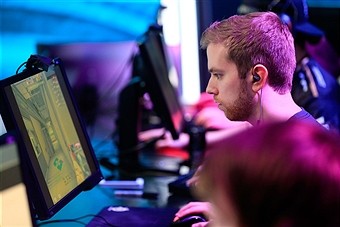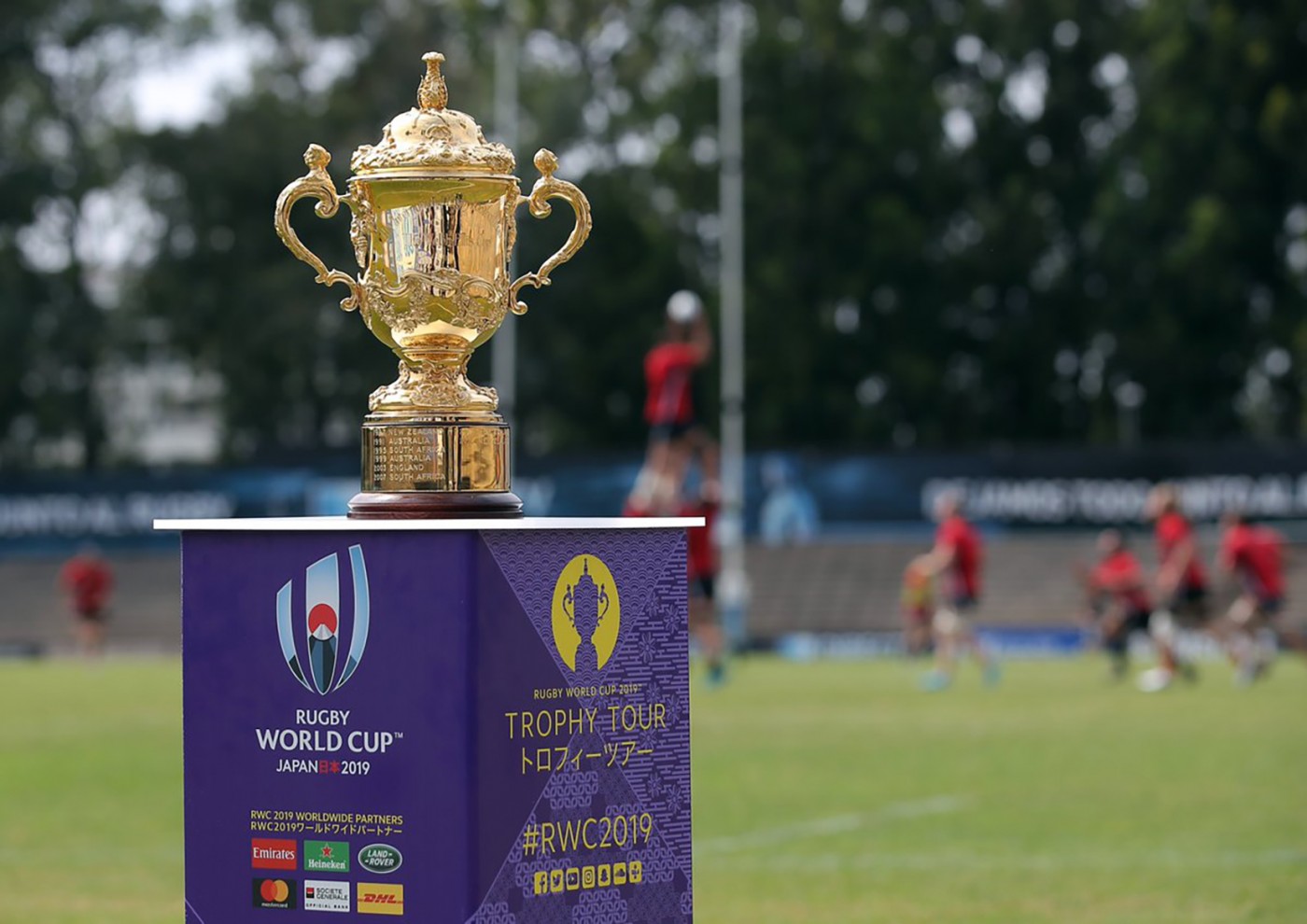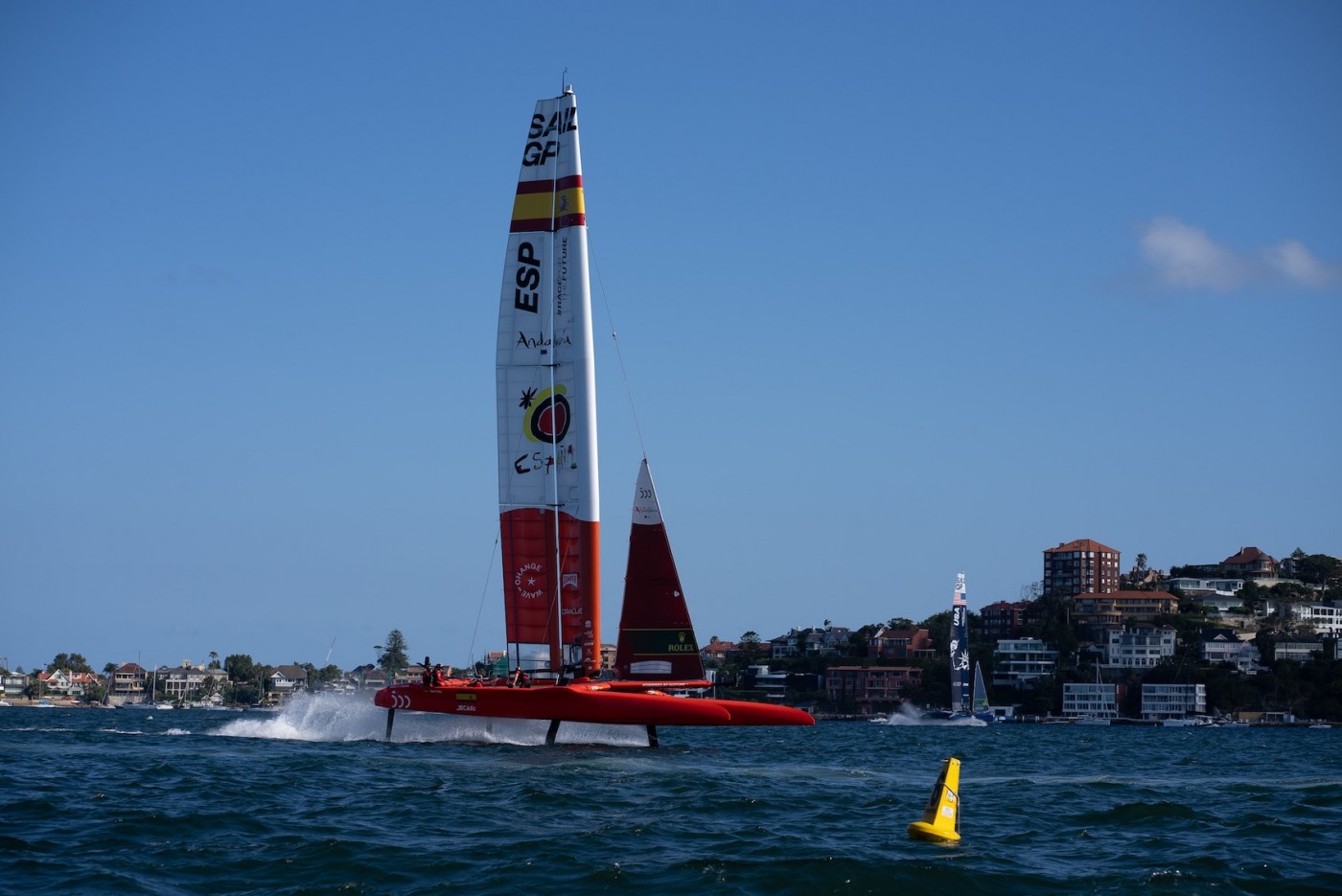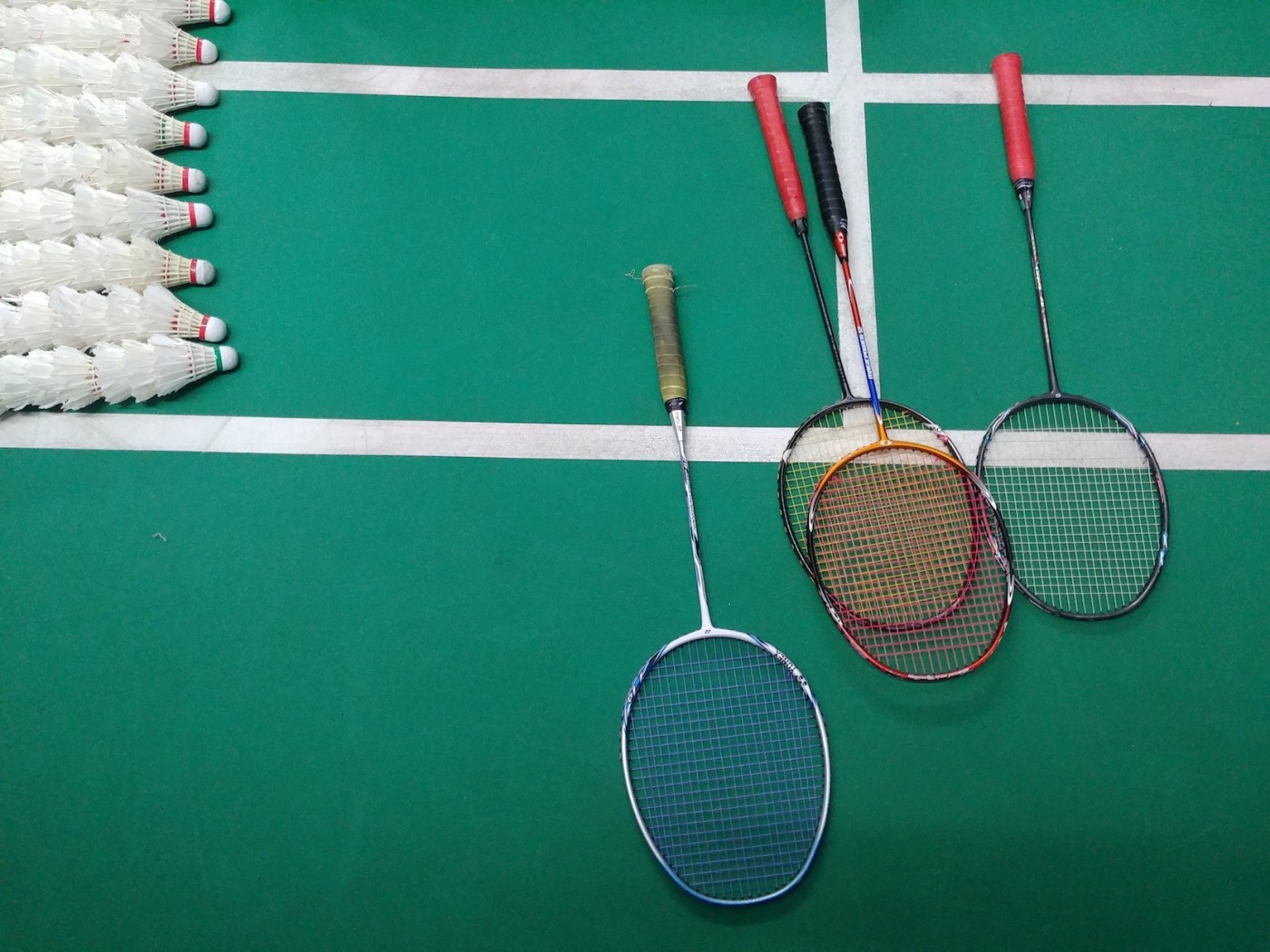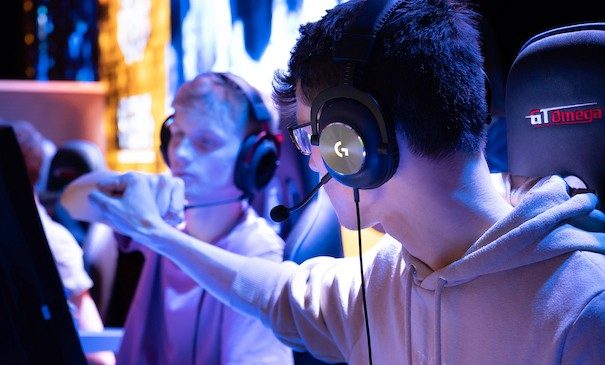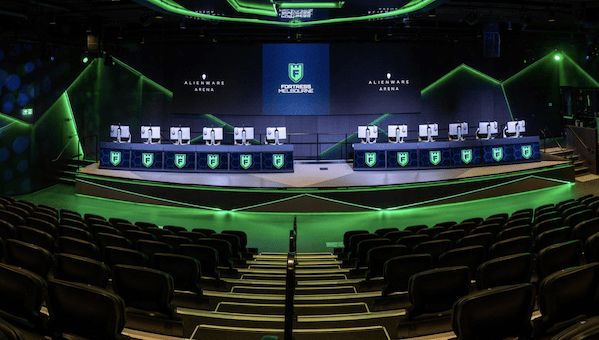When will blue-chip brands get seriously involved in esports?
This question is being posed at every industry conference, podcast and trade magazine. It arguably overstates the case – there is a growing group of major, ‘non-endemic’ brands that are sponsoring esports, including Red Bull and Coca-Cola.
“Esports is receiving a lot of attention from the mainstream media, and there are plenty of non-endemic [non-gaming] brands looking to learn more about the esports space. But we first used gaming for marketing purposes in the 1980s and have been a global partner of the League of Legends since 2013,” says Alban Dechelotte, Senior Entertainment Marketing Manager at Coca-Cola. “The brook is already a river – Coke, HTC, Intel, GEICO…big brands are there. And we all know it’s working.”
A river, maybe, but not yet a flood. Why?
To use traditional sports industry parlance, esports ‘rights-holders’ – owners of tournaments, games publishers, teams – are good at talking about their audiences and inventories, but not so good at presenting it as a value proposition to brands.
“There’s still a big disconnect,” says Malph Minns, Managing Director at Strive Sponsorship, an agency that has an increasing presence in esports. “Rights-holders want cash, and to get that they recognise they can sell to both endemics and non-endemics. The norm in sport is for non-endemics to be of greater value – but that’s a reasonably new frontier in esports, and creating the right commercial proposition takes time and expertise.
“They need to identify what role they can play in delivering a brand’s marketing objectives, ask brands what their overall challenges are in reaching consumers and illustrate ways they can help with that. At the moment, rights-holders are too focused on commercial assets, rather than showcasing how these assets can be combined to deliver valuable engagement to their fans.
“They also need to understand, and be able to clearly demonstrate, who their specific fans are, rather than rely on generic esports fan profile data. When rights-holders fully understand that, we’ll see bigger and better deals being done. At the moment brands can’t see the wood for the trees.”
Dechelotte agrees that the tools and research used by esports rights-holders to understand their audience and measure engagement need to improve:
“Monetising esports from a rights-holder perspective is definitely new, and some of the platforms need to improve the data they provide brand partners. Detailed audience data is what big brands like Coke use to make their decisions. Not things like social media impressions.”
Big media agencies don’t understand esports
A better understanding of esports also needs to develop at the big, retained media agencies that advise blue-chips on communications and marketing.
“I’m amazed by the number of small, entrepreneurial agencies who are hungry to demonstrate, innovate and push new ideas in the esports space. However, I’m also amazed by the lack of understanding from some of the big media agencies – many don’t, even now, understand that esports is a wave that’s coming and brands need to be a part of it,” says Dechelotte. Coke chooses its own sponsors, and then works with agencies to activate them, including with his alma mater Havas Sports & Entertainment.
“Big brands rely on their media agencies to make decisions and it’s my view that there’s a real lack of knowledge and understanding,” says Darren Cox, the former Global Motorsport Director and European Brand Director at car manufacturer Nissan. “When there’s a new area for brands to look at, media agencies would usually swallow up the small, specialist operators who know the space inside out. It happened with social media, but it’s not happening with esports yet.”
“There’s definitely a limited knowledge in esports in general,” says Nathan Lindberg, Director of esports Sales at Twitch, the gaming video platform.
“Every digital and media agency is looking for people to expand their expertise. That’s a reality of the space being new, not really a reflection on agency capability in my opinion. Once the facade of ‘this is gaming and this is foreign to us’ erodes, everything will fall into place.”
esports remains fragmented
Esports’ fragmented landscape and unfamiliar structure is preventing some major brands from getting involved.
“Fragmentation and lack of structure really makes it difficult to quickly identify exactly the right commercial proposition,” says Minns. “Even people in esports struggle to keep up with the landscape and what’s going on outside their vertical or title of interest – those working solely in CS:GO, for example, might not know the nuances of League of Legends. Equally, fragmentation offers opportunity, but only for those brands willing to commit to undertaking the due diligence.”
Lindberg says consolidation within esports competitions would let non-endemics develop a clearer idea of the right marketing strategy, pointing to the fact that there are currently four major professional CS:GO leagues, to take one title.
“Leagues may consolidate, or some may fall away,” he says. “Often there’s a bit of an opportunity paralysis – ‘I want to get into esports, but I don’t know where to go’ is a comment I hear often from non-endemic brands. The NFL has been around for six decades, and the way you interact with it is established. But in esports, the right tracks for everything haven’t yet been assigned – brands have a tonne of opportunity but there are so many ways to do things and they’re afraid to take one ‘group’ over another.”
Brands wait on each other to take the first step
Minns also says there is yet to be “truly innovative” partnership between any esports properties and a major blue chip. Few brands are brave enough to move first in a new passion point, he believes, and most will wait for another brand to move first and see how it pans out.
Minns says the current sponsorship situation in esports reminds him of cycling in 2010, when he was Head of Partnerships at the UK-based Team Sky cycling team: “As it was with cycling back then, interest was growing, but major rights-holders were run by a community of passionate cyclist enthusiasts who were looking to attract non-endemic brands but didn’t speak the same language as them.
“Sky’s partnership with cycling was truly innovative – but it wasn’t until that partnership took off, received media attention and won awards that other similar deals with non-endemics started to come through in cycling. I think, therefore, one brand will do something big in esports, it’ll get well-reported, provide a level of comfort for senior decision-makers and give other brands the confidence to go into esports.”
Of the non-endemic brands currently active in esports, almost all have taken the same approach: testing the water with a partnership that can be built upon as they ensure, from the off, they are speaking to the audience in the right way and using the right channels to deliver their objectives.
“Red Bull and Coke were early movers, but they do the same in every area of passion for their target audience,” says Minns. “They go in softly and fine-tune their approach as they go along. Coke has done some great stuff around content, like creating esports Weekly [launched in October 2015 in partnership with gaming website IGN] which brings the magazine format to what’s been going on in esports that week. Coke has seen there’s a lot of that storytelling content missing from esports at the moment and given back to the community.”
Getting it right – GEICO and Totino’s
Lindberg picks out insurance company GEICO and pizza roll brand Totino’s as two whose esports approaches represent good practice for non-endemics.
GEICO partnered with Blizzard Entertainment in June 2015, aligning with Hearthstone, the free-to-play online collectible card game that is part of the Warcraft franchise. A competition was created called the One Nation of Gamers’ Hearthstone: Heroes of Warcraft Tournament.
“GEICO is a great example of a brand that wants to be in esports and is future-proofing its business by being relevant; an 18-year-old isn’t typically going to sign up for an insurance policy, but they might in five years’ time and when they do they’ll have a relationship with GEICO that is so much deeper than a rival brand,” says Lindberg.
“GEICO was clear from the get-go it wanted no cars, no violence and nothing racy…everything had to be G-rated to be on-brand. It decided on Hearthstone, and since that point it’s constantly evaluated its position and what it’s comfortable with.”
Totino’s partnered with the Capcom Pro Tour in 2015, becoming a non-exclusive sponsor of the premier competition for the Street Fighter game series.
“By partnering with an established player – the Capcom Pro Tour – it wasn’t looking to own anything, but was aligning its brand to show the esports audience it had credibility,” Lindberg says. “It has since gone on to create its own Call of Duty event [the Totino’s Invitational Call of Duty Tournament] where it gave fans a preview of the Black Ops 3 game and created the Bucking Couch – basically a mechanical bucking bronco that, on the day of the 2016 Super Bowl, drove excitement through Twitch.
“Totino’s is therefore a great example of a brand coming in very humbly and looking for ways to build credibility. At a Capcom Pro Tour stop this year I saw people holding up Totino’s signs – they weren’t even a sponsor of the event, but they’d been recognised by the community as a credible brand that had supported the esports space.”
The opportunity
For the sponsors that do get it, esports represents a ‘passion point’ for a significant and valuable demographic – young, affluent, tech-savvy, and typically hard-to-reach from a brand perspective.
“When talking to non-endemic brands, I like to sum up the esports opportunity as ‘future-proofing’ their businesses,” says Nathan Lindberg, Director of esports Sales at Twitch, the gaming video platform. “For many blue-chip brands, the audience demographic for esports is their next generation of customer. Esports therefore presents them with a chance to connect with – and grow their sales in – that demographic, though not necessarily always in the short-term.”
“For automotive brands the opportunity they are being presented is obvious: millennials have less interest in cars, and less engagement with motorsport,” says Nissan’s Cox. At Nissan, Cox launched the GT Academy, which gives players of the Gran Turismo game series a route into real professional motor racing, and this June launched eSPORTS+CARS, a professional esports racing team. He also heads up IDEAS+CARS, which advises brands on their marketing strategies.
“Talk to anyone working in the marketing department at a car manufacturer and they’ll tell you stories about successes they’ve had licensing their product to games such as Gran Turismo and Forza, and players who, years later, have bought their car because they first drove it in the game,” Cox adds.
The potential payoff
Experts say that esports marketing channels can be hugely cost-effective for blue-chip brands when compared with similar options in traditional sport. Due to its relative nascency, barriers to entry are lower and there are a large number of opportunities on offer. However, the increasing costs of prize money and player salaries have begun to be shifted onto sponsors in the last two years.
“It’s our firm belief that, though esports isn’t the biggest reach vehicle, it is the most efficient when it comes to reaching millennials,” says Lindberg, who has signed deals with a number of blue chips across North America, Europe and Australia since joining Twitch in August 2015. “If you want to reach adults aged between 18 and 65, a Super Bowl spot will do that. But if you’re a brand trying to influence the next generation of consumers – young adults who haven’t yet made their brand identity statements yet – you’d be hard-pressed to find a more efficient way than esports. And, if you compare it to the cost a Super Bowl ad, you can do it for the fraction of the cost and for a better return.”
How Coca-Cola identifies the right esports opportunity
Coke’s video-game-related marketing can be tracked all the way back to 1983 when it commissioned a branded game for the Atari 2600. In the esports space, it is a global partner of Riot Games’ League of Legends World Championships – a deal first signed in 2013 – for which its headline activation is cinema-viewing parties. For the 2016 finals on October 29, viewing parties took place at more than 200 screens across the US, Canada and Europe.
Alban Dechelotte, Senior Entertainment Marketing Manager at Coca-Cola, explains the company’s decision-making approach to esports properties:
“Coke has a legacy in passion point marketing. We care about what people care about, and that’s why we have a wide portfolio of sports marketing channels, from esports to the Fifa World Cup and Nascar in the United States. Esports are very important to a younger demographic, and we want – and need – to be relevant with the passions relevant to our consumers.
“But Coke is a company with a 130-year heritage, so we’re not going to jeopardise that by partnering with a property – in esports or in any other passion point – that isn’t a good brand fit.
“When we plan our esports partnerships, we discuss very early on – with our communications and marketing teams – the type of games we would associate with.
“There are two main factors that will rule out games we work with:
“Firstly, we don’t partner with games that are overly-violent or bloody – and would therefore have an 18+ certificate. Shooting games like CS:GO are very popular, but aren’t right for Coke, and if it’s not a comfortable place for us, we don’t go there.
“Secondly, we’re a beverage company and have a commitment not to market our products to anyone under the age of 12. There are some games which primarily engage a younger audience – Minecraft, for example. Minecraft is a brilliant, engaging game, but we’d never go near it.”
This article was first published on Sport Business International on 11th November 2016.
If you would benefit from the advice of an esports agency, Strive Sponsorship can help. Contact us for esports sponsorship, commercial, content, operations, investment and communications consultancy services.


